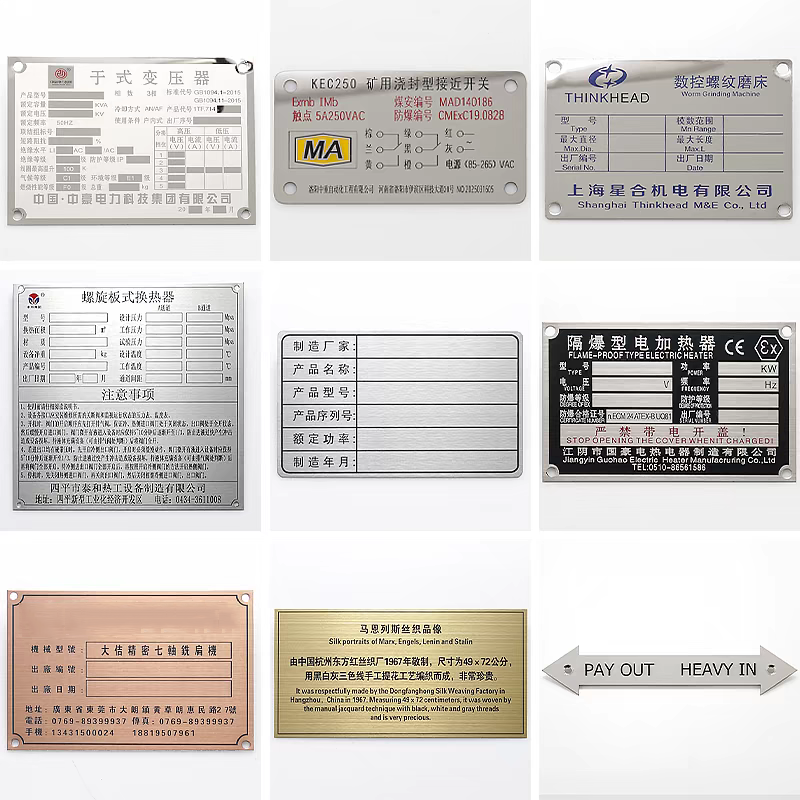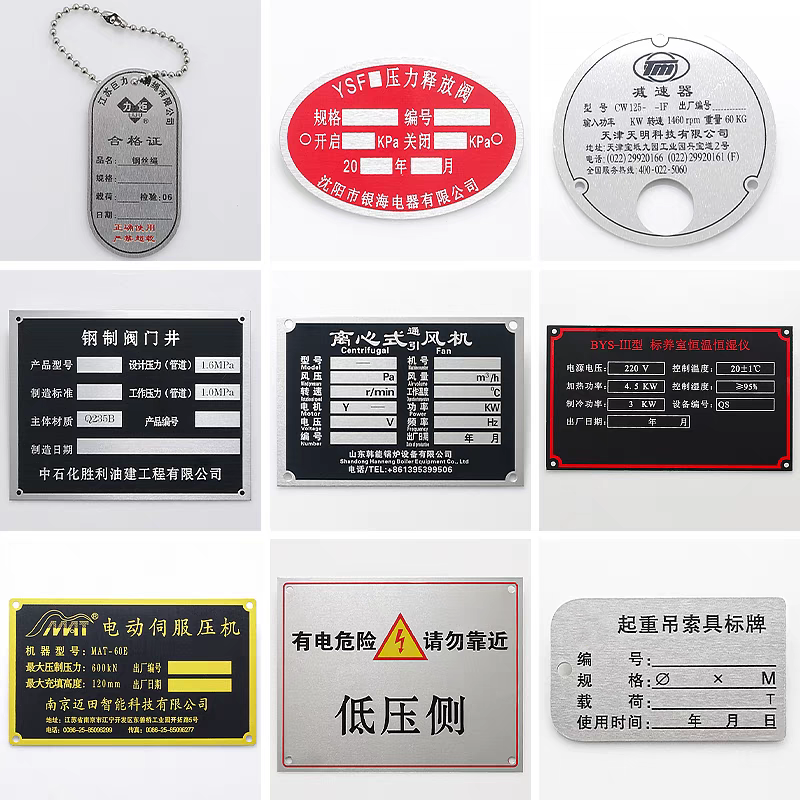Chemical labels are fundamental safety tools, mandated by systems like OSHA's Hazard Communication Standard (HCS) and the Globally Harmonized System (GHS). Their primary function is immediate hazard communication: providing critical information at a glance to protect workers handling the substance. While understanding the required elements (product identifier, pictograms, signal words, hazard statements, precautionary statements, supplier info) is crucial, knowing what is not required on a chemical label is equally vital for compliance, realistic expectations, and effective safety management. This article clarifies the key omissions you should expect.

Why Understanding Omissions Matters
Attempting to place every piece of chemical information directly on the label would render it cluttered, unreadable, and ineffective at its core job: instant hazard recognition. The GHS/OSHA framework intentionally divides information:
The Label: Provides the critical, immediate hazard warning beacon.
The Safety Data Sheet (SDS): Serves as the comprehensive reference document containing detailed supporting information.
Understanding what is not required on a chemical label helps users know where else to look (primarily the SDS) and ensures labels remain focused and functional.
Core Required Label Elements (A Quick Recap)
Before detailing omissions, recall the six mandatory GHS label elements for workplace chemicals:
Product Identifier: Links the label to the SDS (e.g., chemical name, code number).
Signal Word: "Danger" (severe hazards) or "Warning" (less severe hazards).
Hazard Pictogram(s): Black symbols within a red diamond border conveying specific hazards (e.g., flame, skull and crossbones, corrosion symbol).
Hazard Statement(s): Standardized phrases describing the nature and degree of the hazard (e.g., "Causes severe skin burns and eye damage").
Precautionary Statement(s): Standardized phrases advising on prevention, response, storage, and disposal (e.g., "Wear protective gloves/protective clothing/eye protection/face protection").
Supplier Identification: Name, address, and phone number of the manufacturer, importer, or responsible party.
What Is Not Required on a Chemical Label: Key Omissions
The Full Chemical Composition or Exact Percentages (Trade Secrets)
Why it's not required: Protecting proprietary formulations is a legitimate business concern. Disclosing exact recipes could undermine competitive advantage. GHS and OSHA regulations explicitly allow manufacturers/suppliers to withhold the specific chemical identity and/or exact concentration of ingredients if they are bona fide trade secrets.
Where the information is found: SDS Section 3 (Composition/Information on Ingredients) must list all hazardous ingredients above certain cut-off concentrations unless claimed as trade secrets. Even for trade secrets, the SDS must provide generic information (e.g., chemical family) and indicate that specific identity/concentration is withheld. The label itself only needs the Product Identifier, linking it to the SDS.
Key Takeaway: Expecting a full ingredient list with percentages like on food packaging is unrealistic due to trade secrets; this detail belongs in the SDS. Understanding what is not required on a chemical label includes recognizing that complete compositional transparency isn't mandated on the label itself.

Comprehensive Environmental Fate and Ecological Data
Why it's not required: While environmental hazards (like aquatic toxicity) are classified under GHS and must be communicated via pictograms (e.g., the dead fish/tree symbol) and hazard statements if criteria are met, the label does not require detailed data about environmental breakdown (biodegradation, bioaccumulation potential), long-term ecological effects, or specific soil/air impacts beyond the basic hazard classification.
Where the information is found: SDS Section 12 (Ecological Information) contains details on ecotoxicity, persistence, degradability, bioaccumulative potential, and mobility in soil. This section provides the scientific basis for any environmental hazard classification communicated on the label.
Key Takeaway: Detailed scientific data regarding environmental persistence or long-term ecosystem impacts fall outside what is required on a chemical label, residing instead in the SDS's ecological section.
Specific Personal Protective Equipment (PPE) Recommendations Beyond General Precaution
Why it's not required: While Precautionary Statements on the label include general advice like "Wear protective gloves/protective clothing/eye protection/face protection" (P280), the label does not mandate specifying the exact type, material, or performance standard (e.g., "Nitrile gloves, >8 mil thickness, meeting ASTM D6978" or "NIOSH-approved N95 respirator"). PPE needs can vary significantly based on task, concentration, duration, and workplace conditions.
Where the information is found: SDS Section 8 (Exposure Controls/Personal Protection) is the primary location for detailed, substance-specific PPE guidance. This section should specify the types of gloves (material/resistance), eye/face protection, respiratory protection (if needed, including cartridge type), and protective clothing required for safe handling. The employer is then responsible for conducting a workplace hazard assessment and selecting specific PPE based on the SDS recommendations, the specific tasks being performed, and potential exposure levels.
Key Takeaway: Finding precise glove materials, respirator specs, or protective suit standards directly on the chemical label is not required. This level of detail is purposefully located in SDS Section 8 to allow for context-specific application. This is a critical aspect of what is not required on a chemical label.
Full First-Aid Procedures or Detailed Medical Treatment Protocols
Why it's not required: Labels include critical immediate Response Precautionary Statements (e.g., "IF INHALED: Remove victim to fresh air and keep at rest..." - P341, or "IF ON SKIN: Wash with plenty of soap and water" - P302+P352). However, they do not contain comprehensive first-aid protocols for all potential exposure scenarios or detailed medical treatment procedures suitable for healthcare professionals.
Where the information is found: SDS Section 4 (First-Aid Measures) provides detailed, step-by-step first-aid instructions for different routes of exposure (inhalation, skin contact, eye contact, ingestion), notes to physicians regarding specific treatments or antidotes, and information on important symptoms/effects (both acute and delayed). This section is designed for trained first-aid responders and medical professionals.
Key Takeaway: While essential immediate actions are on the label, comprehensive first-aid protocols and specific medical treatments are explicitly not required on a chemical label; SDS Section 4 is the dedicated resource. Recognizing what is not required on a chemical label prevents reliance on it for complex medical guidance.

Complex Physical/Chemical Property Data
Why it's not required: While hazard classification (driven by properties like flammability, reactivity, corrosivity) is communicated on the label via pictograms and hazard statements, the label does not need to display the underlying raw data or detailed properties not directly tied to the hazard classification (e.g., exact pH if not corrosive, density, evaporation rate for non-flammables).
Where the information is found: SDS Section 9 (Physical and Chemical Properties) lists detailed data such as appearance, odor, pH, melting/freezing point, boiling point, flash point, flammability limits, vapor pressure/density, solubility, partition coefficient, auto-ignition temperature, decomposition temperature, and viscosity. This information is crucial for engineers, safety professionals, and emergency responders for risk assessments, process design, and spill response planning.
Key Takeaway: Extensive physical/chemical data like exact flash points, vapor pressures, pH values (unless indicating an extreme hazard), or partition coefficients are not required on a chemical label. This technical information belongs in SDS Section 9. Knowing what is not required on a chemical label helps avoid confusion over missing technical specs.
Detailed Disposal Instructions and Waste Classification Codes
Why it's not required: While the label includes Precautionary Statements related to disposal (e.g., "Dispose of contents/container in accordance with local/regional/national/international regulations" - P501), it does not provide specific instructions on how to dispose of the chemical waste or the applicable regulatory waste codes (e.g., EPA D001 for ignitable waste). Disposal methods and classifications depend heavily on the chemical's properties, concentration, quantity, and local, state, federal, and international regulations, which vary widely.
Where the information is found: SDS Section 13 (Disposal Considerations) offers guidance on appropriate waste treatment methods, information about contaminated packaging, and reminders about complying with regulations. Final waste determination, classification, and handling procedures are the generator's responsibility based on the SDS guidance and applicable laws.
Key Takeaway: Precise disposal methods, recycling instructions, or specific hazardous waste codes are not required on a chemical label. The SDS Section 13 provides guidance, but final waste handling is determined by the user according to complex regulations. This omission is a key part of what is not required on a chemical label.
Complete Transportation Information (DOT Placards vs. GHS Labels)
Why it's not required: Transportation of hazardous materials is governed by separate regulations (e.g., DOT in the US, ADR in Europe, IATA/IMO for air/sea). While there is overlap and harmonization (especially with GHS physical hazard pictograms), the specific requirements for shipping labels, placards, UN numbers, packing groups, and packaging are dictated by transport regulations, not the OSHA workplace GHS label. A chemical container might have both a GHS label for workplace safety and distinct DOT/IMO labels for shipping.
Where the information is found: Transport information, including proper shipping names, UN numbers, packing groups, required transport hazard labels (which may look similar but have specific DOT/IMO/etc. markings), and placarding requirements, is found on the transport documentation (shipping papers) and the transport label/placard itself. SDS Section 14 (Transport Information) summarizes the transport classification according to relevant regulations.
Key Takeaway: Full transport-specific markings (like UN numbers, packing groups, or DOT hazard class labels in their transport-specific format) are generally not required on the OSHA/GHS workplace chemical label. Transport requirements are a separate layer of regulation. Understanding what is not required on a chemical label includes differentiating workplace labels from transport labels.
Understanding what is not required on a chemical label is fundamental to using chemical information effectively and maintaining compliance. The GHS/OSHA system relies on a clear division of labor:
The Label: Serves as the critical, immediate hazard warning beacon. Its strength lies in its simplicity, standardization (pictograms, signal words), and ability to convey essential risks instantly upon container handling.
The Safety Data Sheet (SDS): Acts as the comprehensive reference document. It contains the detailed information supporting the hazard classifications and providing essential instructions for safe handling, storage, exposure control, emergency response, disposal, and regulatory compliance across the chemical's lifecycle.
Attempting to place all SDS information onto the label would defeat its primary purpose: rapid hazard recognition. Knowing what is not required on a chemical label empowers users to leverage the SDS effectively. Always consult both the label and the corresponding SDS for complete safety information when working with chemicals. This two-pronged approach ensures workers have the immediate warnings they need and the detailed guidance required for safe operations, fulfilling the core goal of the Hazard Communication Standard: a safer workplace through informed chemical handling. Remember, clarity on the label about hazards is paramount, and the omissions discussed are intentional to preserve that clarity.







